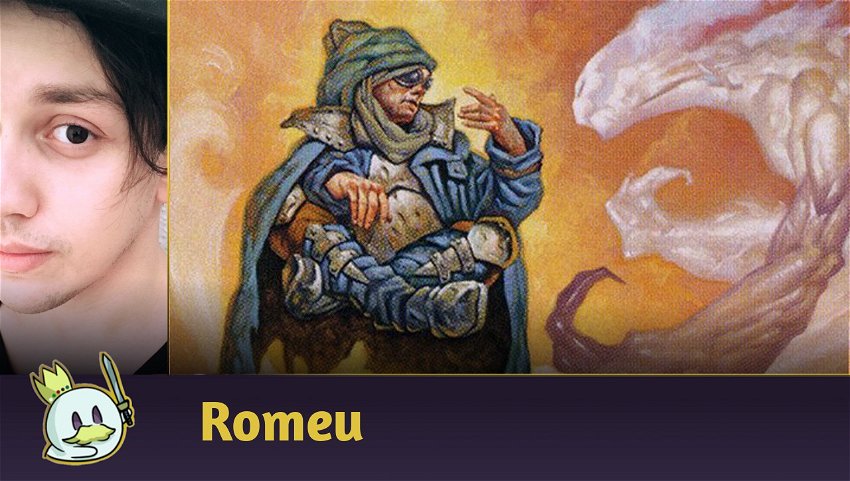Magic is a complex game, everyone is aware of that.
There are numerous strategies, terminologies, methods for evaluating cards, for building decks, among a number of other circumstances that make the game an almost intangible universe of its own for those who are not used to it — and if you delve further, you will discover that there are countless methods to each of these situations for each competitive format or game environment: there are lessons that some formats teach us better than others.
I started playing Pauper in 2014, and since then, the format has changed so much that some of the key elements that defined it have been redefined over the years. However, it was through it that I learned some important lessons about how to build a deck, or how to analyze a Metagame, etc.
So today I'm bringing you, in an objective and hopefully simplified way, three lessons that Pauper taught me and that influence some of my choices in the competitive scenario.
I emphasize that none of them is an exclusive element of the format, but they tend to be a fundamental part of its structure since its conception and, therefore, are much more notorious when it comes to it than other competitive formats.
1 - Value interaction over individual raw power

Pauper is, of course, still a format with significantly lower high-impact threats availability than other competitive formats. In fact, that only changed with the release of Boarding Party and Annoyed Altisaur in Commander Legends as, before that, our late-game bombs were, at best, Mulldrifter or Gray Merchant of Asphodel.
So, for a long time, Pauper has had to rely less on cards capable of impacting the game at stratospheric levels and more on how small interactions between its cards actually work. And to this day, most of the strategies available in the format rely on the idea that the synergies between your spells are more important than the immediate impact of a single threat.

I suppose the best example of this is Kor Skyfisher: it's a bad card for any other competitive format, and it saw little play during its lifespan even in Standard. Its main purpose when created was to bounce lands to trigger Landfall again.
However, it is one of the most important creatures in Pauper's history as it interacts with any ETB or LTB effect in the game — an element that the format has been guided by for years — and its presence in the strategy that became known as Kuldotha Boros basically changed the way we looked at ETB effects.

Another notable example of this is Faeries' card advantage engine with Ninja of the Deep Hours. The "Fae + Ninjas" strategy had been known in Legacy for years, but it never became relevant in any competitive scenario, but found its space in Pauper and, even after a decade, it is still one of its main competitive decks.
This is primarily because Spellstutter Sprite is very powerful in the Faeries shell and pretty decent on its own — as I've mentioned several times, it's at the very least a pseudo-Snapcaster Mage for Mental Misstep — and a Tempo base with fewer impactful plays coming from across the board made it possible for an unimpressive card by general game standards, like Ninja of the Deep Hours, to become a mainstay of what it means to have a card advantage in Pauper, even in the face of even more powerful mechanics like Monarch or the now-banned Bonder's Ornament, and it got even better as more efficient faeries emerged in later years.

If we look at the format as a whole, Pauper to this day is still totally focused on the combination of cards overlapping their individual power, from Familiars to Boros Bully, from Moggwarts to Elves, etc.
This doesn't mean that this element is unique to the format, but it is through it that we come to value and be more meticulous with how the cards in our deck interact with each other, instead of just trying to sequence the best cards in the format, one after another.
2 - If you don't have the best possible answer, find another way to deal with the problem
Currently, this issue has mostly been mitigated, but Pauper has a long history of not having the appropriate answers for certain situations.

I believe the best example of this has always been sweepers, especially when Burning-Tree Emissary was released in Modern Masters 2017 and leveraged Stompy and other go-wide strategies like Red Deck Wins to the top of the format, allowing for recurring quick wins against archetypes that needed a setup before they worked — that is, basically all of Pauper's Top Tiers at that time.
Soon, the format needed to adapt and this, conveniently, came in addition to three other critical elements for the format's history: Monarch and Ash Barrens have been released, in addition to the advent of a more control-oriented version of Tron.
Both Monarch and a strategy that aimed to take the game to the late-game inevitability had to actively worry about the opponent filling the board with creatures and making it impossible to accumulate card advantage on the other side, and if Fiery Cannonade already existed in Pauper at that time, I doubt that we would have seen these strategies adopt another proposal to deal with this problem: preventing the combat damage.

The famous "fog lock" allowed Monarch strategies to gain more turns to establish its plan and pressure the opponent while still being able to save removals for when it really mattered — and this eventually led to the creation of Boros Bully — while Tron didn't have to worry as much in taking damage, it just needed to make sure it had enough turns to cast a Rolling Thunder for lethal damage or create loops with Dinrova Horror and Ghostly Flicker times enough to lock the opponent to out of the match.
These interactions have refined over the years, while others have become popular, such as Pestilence + Guardian of the Guildpact, to the point where the format's first three-mana sweeper was released and consequently changed the entire Metagame, to the point of invalidating more aggressive archetypes for a long time and making the format almost exclusively based on Card Advantage.
However, the years we spent trying to play around Burning-Tree Emissary and any strategy that populated a board with creatures larger than an Electrickery could kill significantly helped shape Pauper's story and format as we know it today, teaching us the precious lesson of learning to deal with situations based on what we have available, often forcing us to explore less obvious circumstances, where not everything is as easy to resolve as a Dust to Dust supposedly solves Affinity's problem by exiling two lands with a single card.
In this sense, the format showed us how to understand the game we are playing and how the decks behave during the course of a match makes a difference when it comes to defining "what I need to win". You may not even have a sweeper to deal with an army of 2/2 or larger creatures, but you may have ways to force your opponent to keep up with you, rather than the other way around.
3 - A slow manabase can be mitigated with cheap spells

Pauper's manabase for multicolored lists has never been exemplary, and as far as speed is concerned, I still believe it's not good — and maybe it doesn't need to be, as tapped lands are an inherent part of the format's nature, and the only point of improvement in this case is the expansion of color availability that has been taking place with the Gates and Thriving Lands.
For the obvious trade-off of speed for consistency in resorting to two or more colors on your list to expand the amount of threats and answers you have, Pauper for many years has been guided between choosing to play fast and rushing the slower archetypes, or slowing down your game rhythm and receive in exchange more varied options for different situations.

However, it also means adapting your cards to mitigate this damage, and Pauper excellently demonstrates how to do this because there is no other way to play around this than using cheaper spells, of which the format has an abundance with Lightning Bolt and the like in red, or Snuff Out and Disfigure in black, etc.
The direct consequence of this conclusion is that your engine also needs to be cheap. Most of the permanents that constitute a Midrange in Pauper today cost a mana or two, or have some specific interaction that allows them to play higher cost spells for a lower mana value, or even for free, as in the interaction between Faithless Looting and Prismatic Strands.

However, over the years, Pauper has become less focused on the dispute between "Speed versus Value", especially in the post-Commander Legends world and even more in the contemporary format, where matches are mostly decided between who accumulates the most resources and establishes a stronger board position — but Monastery Swiftspear has resurfaced the debate regarding speed as a useful strategy against card advantage engines, and again we've seen archetypes like Boros Bully lower their mana curve to be able to hold off the most explosive turns against Mono Red Blitz.
That said, in a world where faster duals are non-existent, Pauper teaches players how to pilot their decks around tapped lands without missing the opportunity to get the most out of their spells and mitigating the possibility of suffering a pseudo-Time Walk in the first few turns due to a higher than desired cost requirement.
Conclusion
That's all for today.
There are several other lessons that I mostly learned from Pauper, as well as others that were more prominently applied to other formats. Possibly, in another article, I will bring a more profound analysis on how these elements are mixed in the most varied formats and how they help to establish a broader understanding of the game.
Thanks for reading!













— Comments 0
, Reactions 1
Be the first to comment